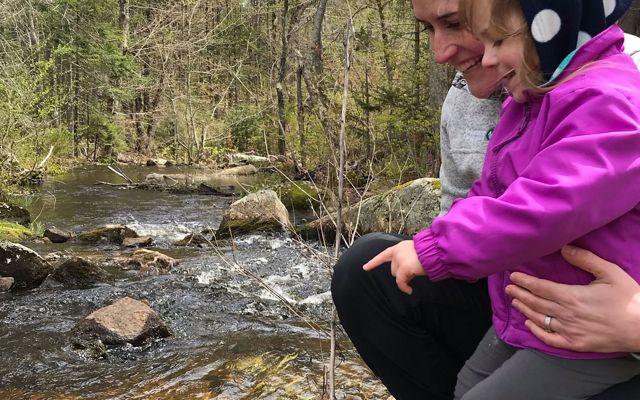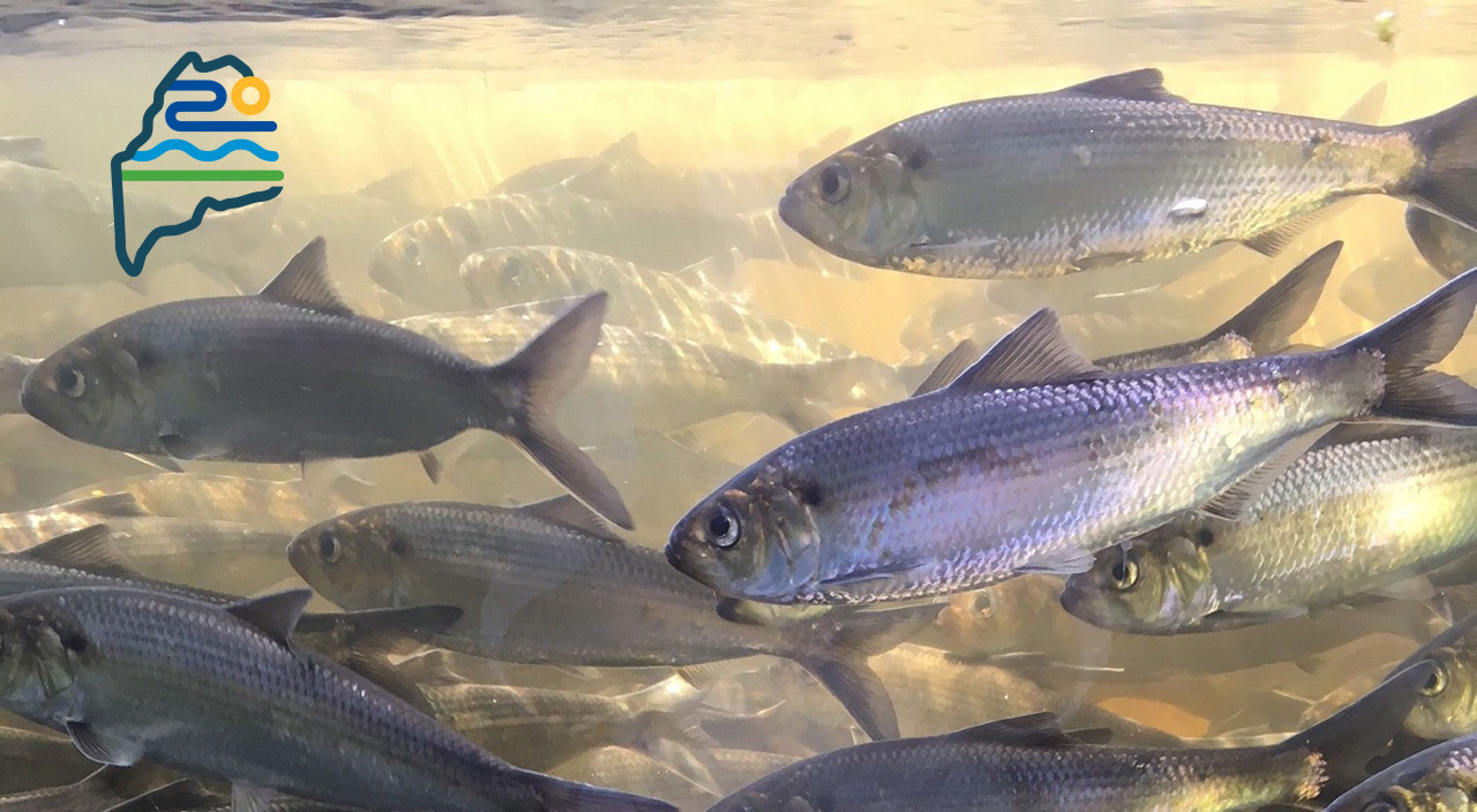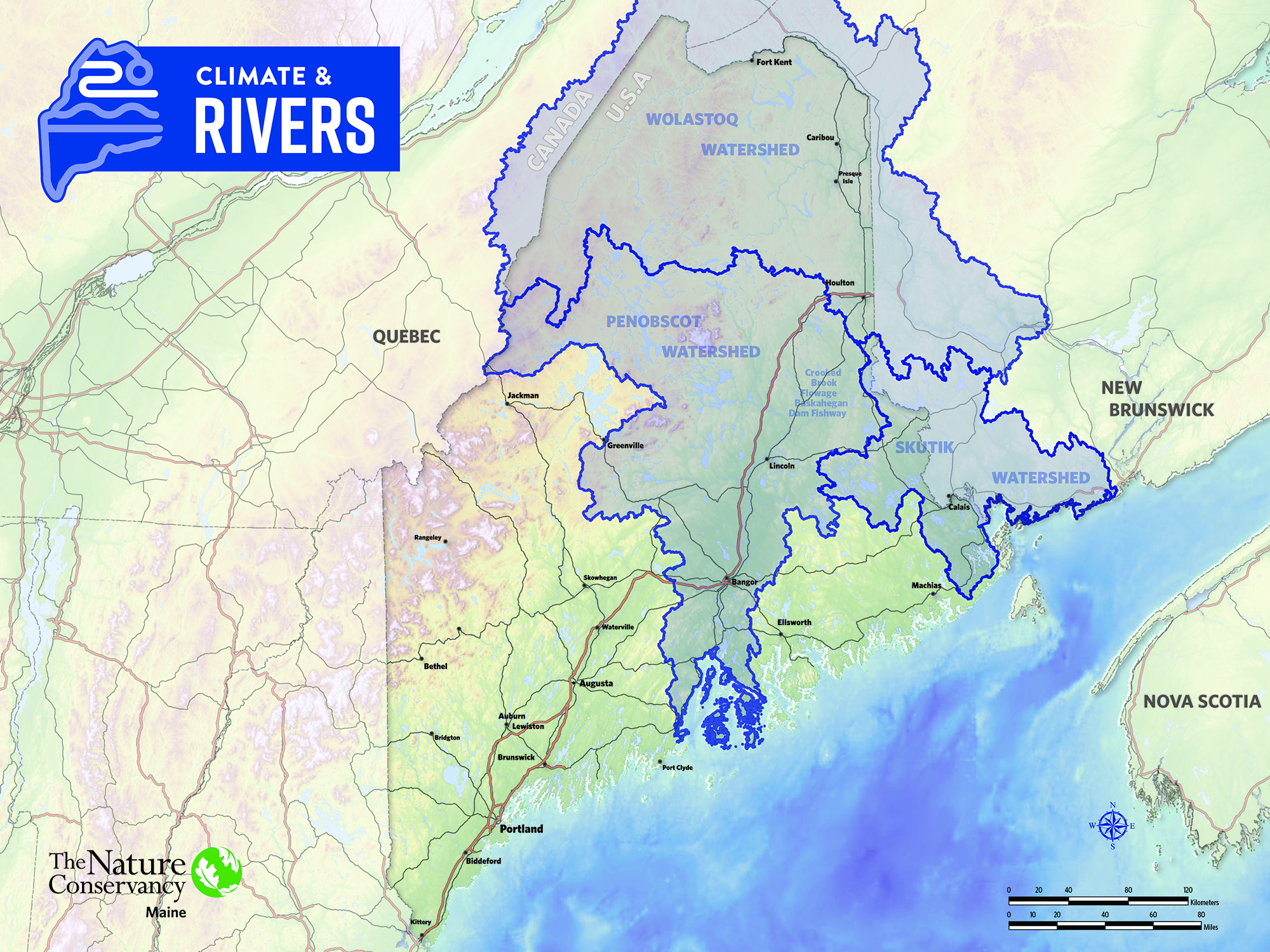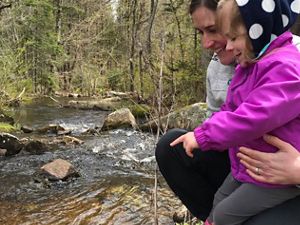Fostering the Flow Between Land and Sea
In Maine, TNC is pioneering unique strategies to address the effects of climate change through reconnecting rivers and waterways.
Our state is home to some of the healthiest and most resilient watersheds in the eastern U.S. Maine rivers form a 75,000-mile network and support biodiversity along our riparian arteries, providing habitat for many rare, threatened and endangered species.
Aging dams and inadequate road crossings constrict these courses. In addition to dividing critical habitat for native species, they put human communities at increased risk of flooding from climate change. By restoring free-flowing rivers and streams, we will increase the resilience of these networks and foster one of the most connected, intact river systems in the nation.
Quote: Eileen Bader Hall

We know reopening our waterways is a win-win—both for fish and wildlife that rely on connected rivers and streams, as well as for people facing increased flooding of roads from climate change.
What We’re Doing to Restore Rivers
Properly designed fish-friendly road crossings reduce flood risk, improve transportation safety and help minimize short-term repairs cost. That’s another reason why The Nature Conservancy in Maine is working with partners to remove barriers to sea-run fish and promote healthy, free-flowing rivers all around the state.
Continuing to Reconnect the Penobscot Watershed
We are collaborating with state and federal agencies, the Penobscot Indian Nation, and private and municipal dam owners in restoration efforts throughout the watershed, with a focus on critical headwater habitat. The Crooked Brook Flowage/Baskahegan Dam Fishway has reconnected almost 96 miles of upstream habitat and may increase the alewife run to two million fish.
Restoring the Skutik (St. Croix) River
At the request of tribal, federal and state partners, TNC is now engaged in a major restoration effort on the mainstem of the river. The watershed covers about 1,600 square miles in the U.S. and Canada and is the heart of Passamaquoddy ancestral homeland. The watershed represents the largest opportunity for alewife restoration in the North Atlantic, with potential returns estimated at 20-30 million fish. Other species like Atlantic salmon, American shad, American eel and sea lamprey will benefit as well. Work in this watershed will yield significant cultural restoration impacts on both sides of the border.
Better Road-Stream Crossings for Fish and People
In Maine’s North Woods, thousands of roads used for timber harvesting and recreation constrict waterways and prevent fish and other aquatic organisms from reaching critical habitat. Through our Watershed Approach To Restoring Stream Systems (or WATRSS) Project, made possible through the Regional Conservation Partnership Program of the Natural Resources Conservation Service, we partner with many tribal, federal, nonprofit and private landowners to plan for and carry out needed upgrades across 25,255 square miles of the state.
Collaborative Monitoring of Sea-Run Fish
Together with agency partners and other nonprofits, we are engaging volunteer scientists along the coast of Maine to monitor sea-run fish populations. These fish, particularly native rainbow smelt, are sensitive to shifts in water temperature. Information about their location will indicate how our coasts and coastal rivers are changing in response to the climate crisis. These efforts are also an important tool for engaging and educating the public about our mission to restore habitat for sea-run fish.
Wolastoq (St. John) River Collaboration
TNC Maine is supporting the Houlton Band of Maliseet Indians (HBMI) and partners to restore connectivity at a watershed scale to hundreds of river miles in a 5-million-acre portion of the Wolastoq-St. John River basin in Aroostook County, the homelands of the HBMI and Mi’kmaq Nations. The project supports tribal priorities and will open the door to unprecedented federal funding to make these river networks more resilient and road networks safer.
What River Restoration Success Looks Like
By restoring free-flowing rivers and streams, we will increase the resilience of these networks and foster one of the most connected, intact river systems in the nation. As part of our Join Maine campaign, we are working to ensure these critical successes by 2024:
-

2,000 Miles
of Maine rivers and streams are protected and reconnected.
-

15 Million
sea-run fish return to Maine’s rivers each year.





